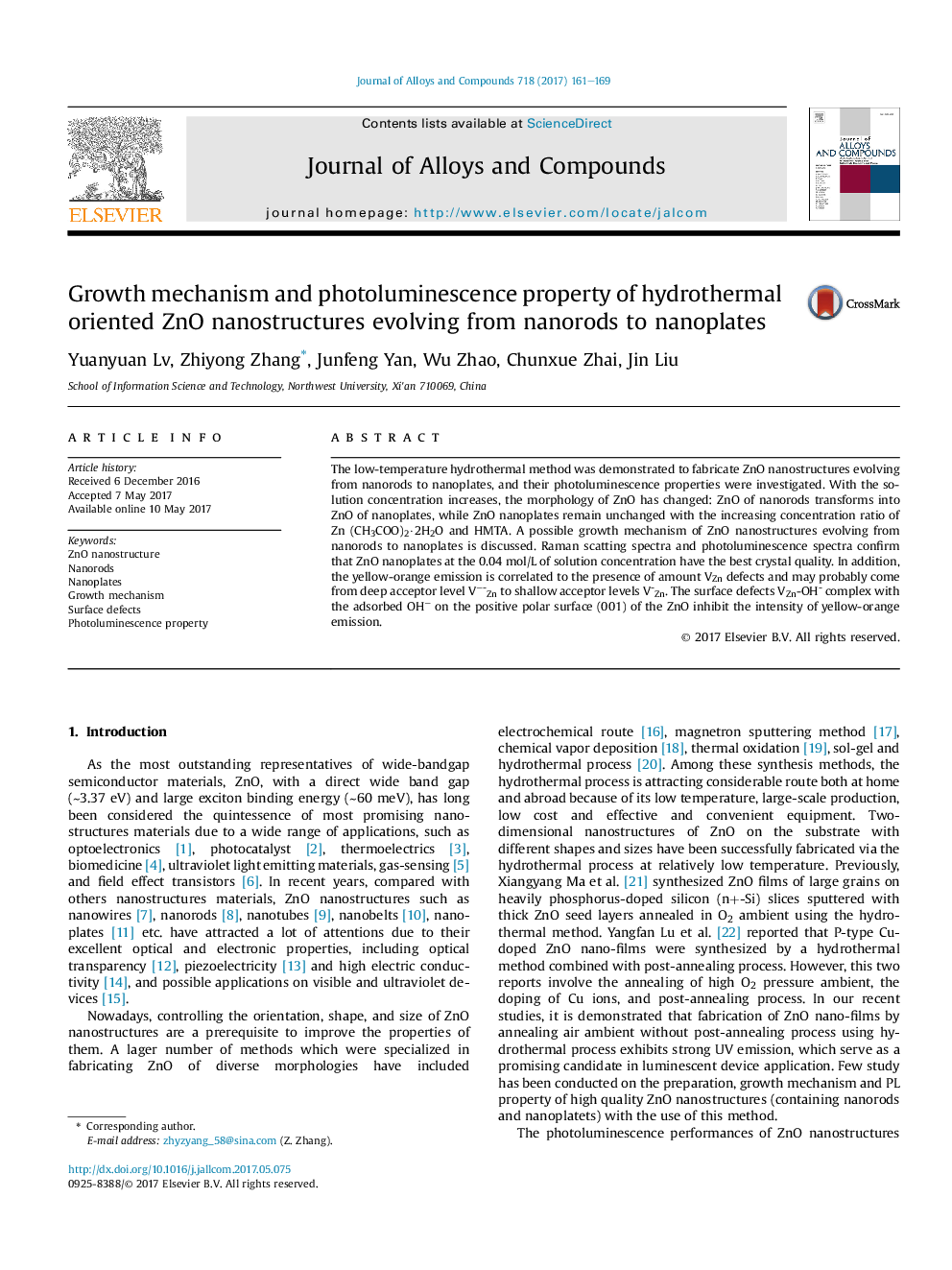| Article ID | Journal | Published Year | Pages | File Type |
|---|---|---|---|---|
| 5459437 | Journal of Alloys and Compounds | 2017 | 9 Pages |
Abstract
The low-temperature hydrothermal method was demonstrated to fabricate ZnO nanostructures evolving from nanorods to nanoplates, and their photoluminescence properties were investigated. With the solution concentration increases, the morphology of ZnO has changed: ZnO of nanorods transforms into ZnO of nanoplates, while ZnO nanoplates remain unchanged with the increasing concentration ratio of Zn (CH3COO)2·2H2O and HMTA. A possible growth mechanism of ZnO nanostructures evolving from nanorods to nanoplates is discussed. Raman scatting spectra and photoluminescence spectra confirm that ZnO nanoplates at the 0.04 mol/L of solution concentration have the best crystal quality. In addition, the yellow-orange emission is correlated to the presence of amount VZn defects and may probably come from deep acceptor level Vâ-Zn to shallow acceptor levels V-Zn. The surface defects VZn-OH- complex with the adsorbed OHâ on the positive polar surface (001) of the ZnO inhibit the intensity of yellow-orange emission.
Keywords
Related Topics
Physical Sciences and Engineering
Materials Science
Metals and Alloys
Authors
Yuanyuan Lv, Zhiyong Zhang, Junfeng Yan, Wu Zhao, Chunxue Zhai, Jin Liu,
